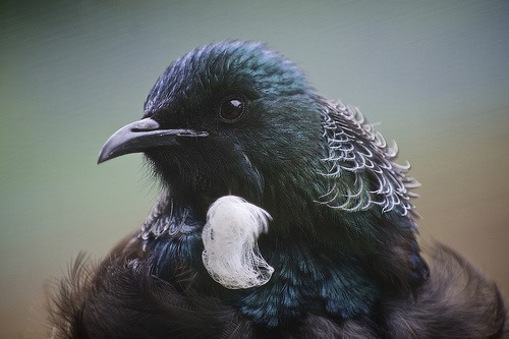Tūī are important pollinators and seed dispersers within our ecosystem. Due to the effects of predation and a limited food source, few tūī were sighted within Hamilton City in the early 2000's.
The Hamilton Halo project is designed around a two-pronged approach to attract tūī back into Hamilton City.
Firstly, the project aims to increase tūī populations in the vicinity of the city by boosting breeding success at several key breeding sites within a 20 kilometre radius of Hamilton City, creating a halo of tūī. These sites are labelled on a Waikato Regional Council map.
Increasing predator control methods at these sites allows greater fledgling rates to occur. Waikato Regional Council also works alongside Hamilton City Council and landowners to reduce the effects of predation on tūī.
Increasing the planting of key species within Hamilton City to produce food sources for tūī is the second aim of the project. By planting a wide variety of species, tūī will have flowers and nectar to feed on throughout the year.
While the project is focused primarily on tūī, Waikato Regional Council hopes other native birds such as korimako (bellbirds) and kererū will also be encouraged to inhabit the city.
An ongoing success
From 2004–2019, tūī numbers increased 25-fold in Hamilton City. Tūī are the third most common native bird in the city's green areas – after the pīwakawaka (fantail) and riroriro (grey warbler). Korimako and kererū are also being sighted. There is evidence kārearea (New Zealand falcon) and kaka may also become more regular visitors to Hamilton.
Useful links
Find out more about the Hamilton Halo project (PDF | 1.2 MB) and see its Facebook page.
Find out how Wellington residents are making city parks, reserves and gardens safe for native birds in this Radio NZ podcast.
This Waikato Times article from 2017 looks at how the halo is also bringing back other birds, such as bellbirds to Hamilton.
Urbanisation, and the associated destruction of habitat, is a major threat to native bird populations, but new research shows, restored urban forests can return native birds to our cities and improve species richness. Read this 2022 article from The Conversation.
Manaaki Whenua – Landcare Research has a series of short videos narrated in te reo Māori and English about the tūī.


